Future Leaders’ Program for Global Peace in Hiroshima
Interview with participants from Nagasaki Prefecture
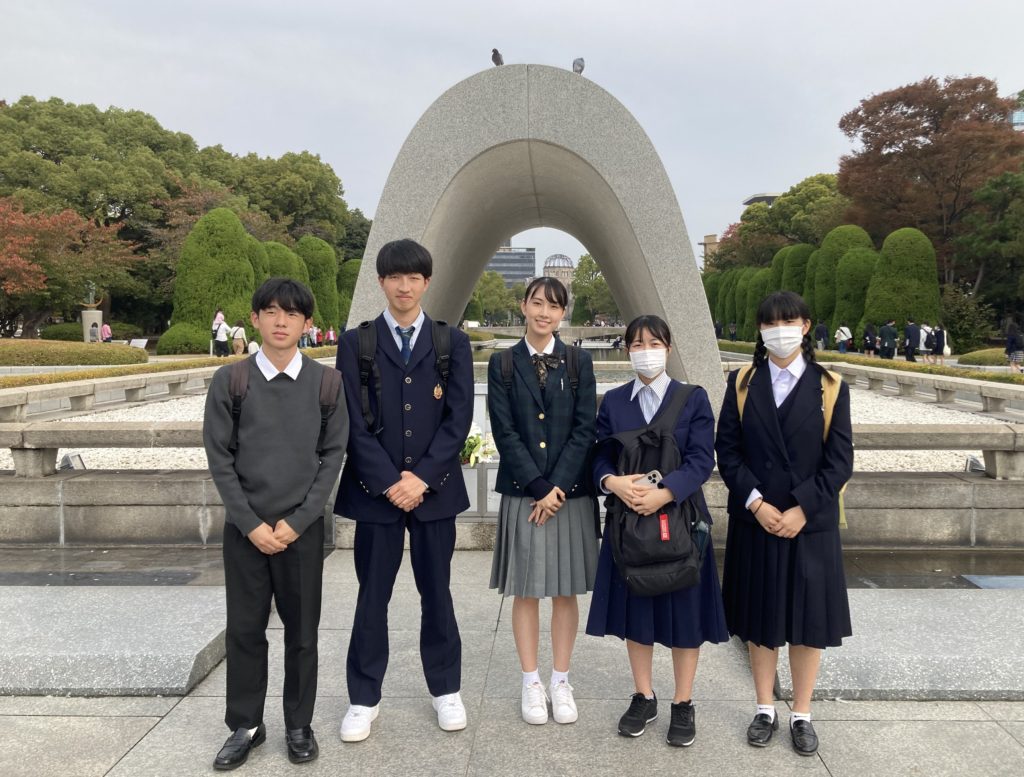
Targeted at high school students, the Future Leaders’ Program for Global Peace in Hiroshima is an education program which seeks to produce talented people who can actively promote world peace on the global stage. As the first venture of 2023, an exchange was held with high school students from Nagasaki Prefecture. After high school students from Hiroshima visited Nagasaki on October 7-9, five students from Nagasaki high schools then came to Hiroshima on November 3-5. They listened to lectures about the atomic bombing and visited the structures which remained after the blast. We asked two of the participants, Hatakeyama Haruto and Sakamoto Ayuko, about their impressions of the Hiroshima program.
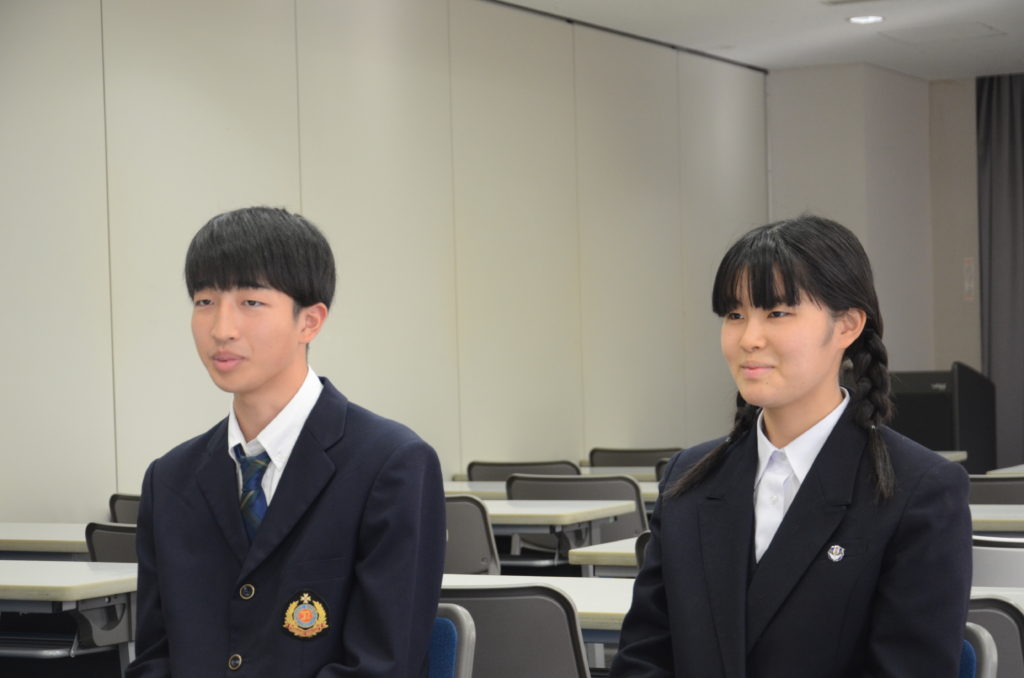
Hatakeyama Haruto (left) and Sakamoto Ayuko (right)
What led you to apply?
(Hatakeyama)
My grandfather was a survivor of the atomic bombing. When I was in elementary school, I had the opportunity to do research about the atomic bomb, and I’ll never forget how my grandfather told me about it with tears in his eyes. Also, my classmate Harada Shinnosuke is the great-grandson of Yamaguchi Tsutomu, who was a double survivor of the bombings in both Hiroshima and Nagasaki. He is making his great-grandfather’s story into a kamishibai (storytelling with pictures) in order to tell more people about it. That is how I became interested in peace and participated in the 10,000 High School Student Signature Campaign. I heard about this program from the teacher who supervises the student council and applied with the hope of deepening my knowledge of peace.
(Sakamoto)
I am also the third generation of a atomic bombing survivor. My great-grandmother was trapped under a building when it collapsed due to the nuclear blast’s shockwave. Although she survived, she suffered from PTSD after the war. My grandmother entered Nagasaki right after the atomic bomb was dropped and was exposed to radiation. With people close to me having suffered from war, I also joined Peace Volunteer and participated in the 10,000 High School Student Signature Campaign after I entered high school. I learned about the Future Leaders’ Program for Global Peace at a time when I was searching for a way to raise awareness in people who weren’t interested in war or nuclear weapons, and I decided to join in the hope that I might strike upon a new idea.
What were your impressions of your visit to Hiroshima?
(Hatakeyama)
I won’t forget the goosebumps I got at the Hiroshima Peace Memorial Museum. The Hiroshima museum has more displays and more real photographs than the one in Nagasaki, and I felt the tragedy of the atomic bomb and a fear which made me want to cry out from my heart. Also, the Hiroshima museum has more advanced digitalization, with touch panels which allowed me to dive deeply into areas I wanted to know more about. In addition to Japanese, its system has many other languages, so that people from around the world can learn more.
(Sakamoto)
The museum stood out for me, too. The belongings and photos of those who died in the atomic bombing, as well as episodes from their lives, are displayed at the Hiroshima museum, which let me truly feel that they did indeed exist in this world at the moment the bomb was dropped. I wish that the Nagasaki museum would use something similar. When we visited the Hiroshima Army Clothing Depot, I was surprised that it was located in a normal residential area. It was frightening to imagine a normal street like that destroyed in the blink of an eye when the bomb was dropped.
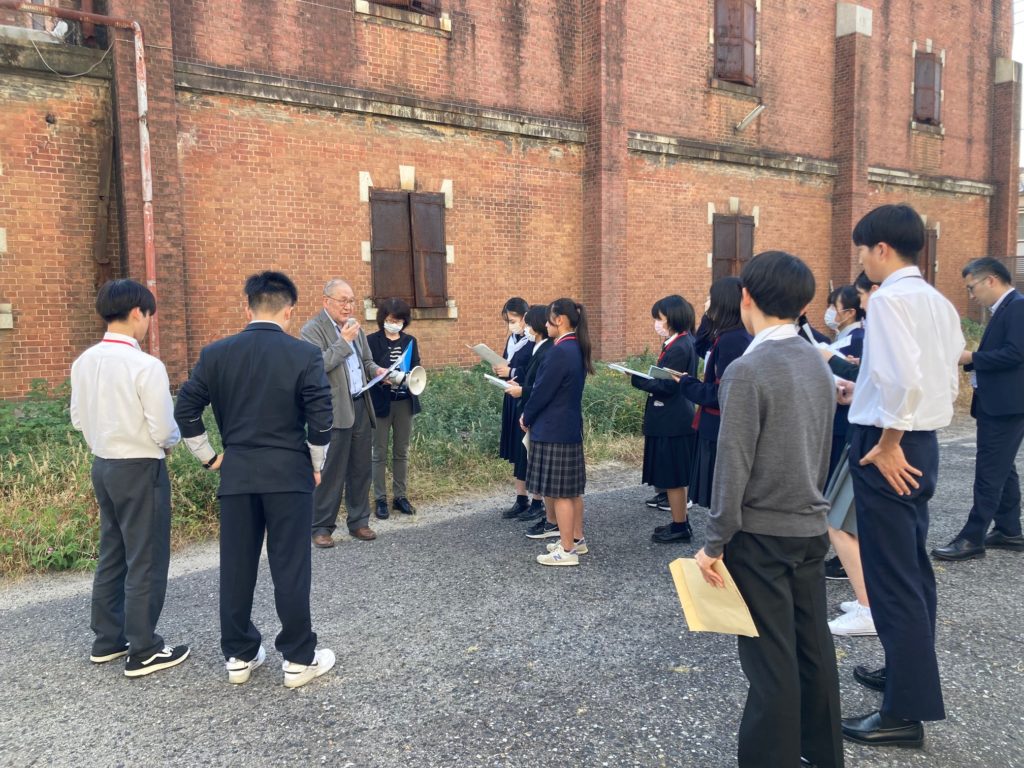
Listening to an explanation at the Hiroshima Army Clothing Depot
What were you takeaways from the Hiroshima visit?
(Hatakeyama)
I had the opportunity to listen to Ogura Keiko’s eyewitness account of the atomic bombing, and she spoke about “the importance of knowing.” She said that it is important to internalize accurate knowledge and history before communicating it to others. I was deeply moved by those words, and I felt that I was able to learn many facts in Hiroshima that I hadn’t known before. As young people from Nagasaki, a city destroyed by a nuclear blast, we have to tell the next generation the truth about the bombing and put forward a different future for the world.

Ogura Keiko delivering a lecture on her experiences of the atomic bombing
(Sakamoto)
I believe that friendship is needed to achieve world peace. If one has friends in another country, one would not want to go to war with that country. When I return to Nagasaki, I want to begin a letter correspondence between my school and high schools overseas about peace and nuclear weapons. Also, on the subject of friendship, I was able to make friends in Hiroshima during this program. I feel a sense of camaraderie with them in our desire to build a peaceful world together. I want to talk more about peace with my friends and have fun together. I think I will visit Hiroshima often in the future.
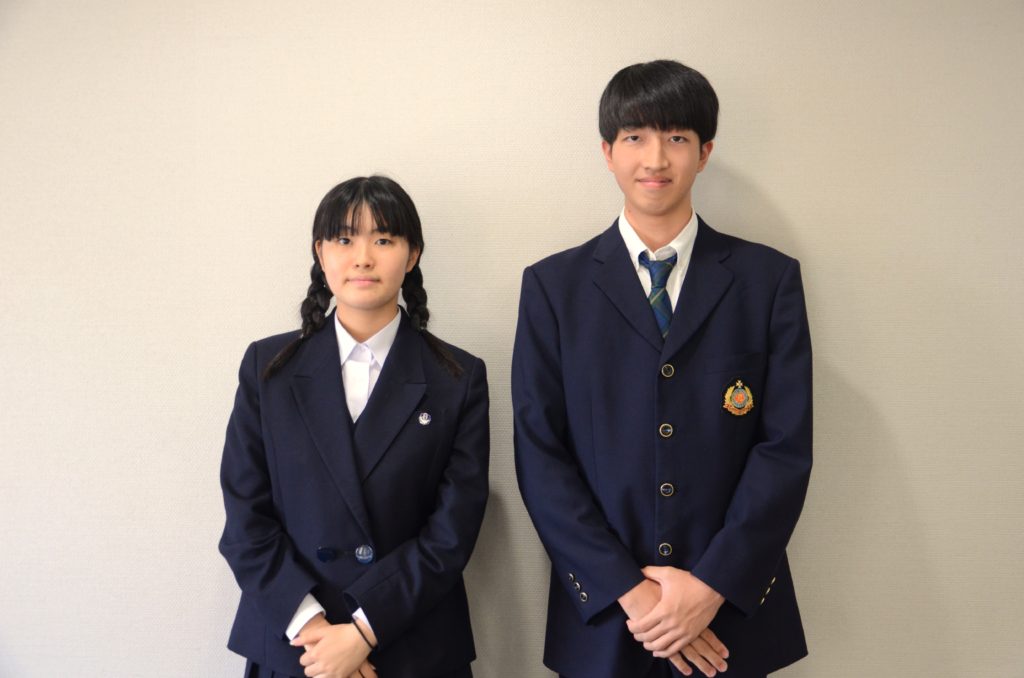
Hatakeyama Haruto. Sophomore at Nagasaki Nanzan High School. The place that surprised him in Hiroshima: Okonomimura.
Sakamoto Ayuko. Sophomore at Nagasaki Higashi High School. The place she enjoyed in Hiroshima: Miyajima.
About the Future Leaders’ Program for Global Peace in Hiroshima
Tags associated with this article



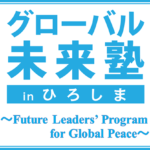

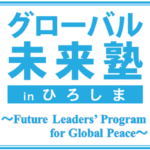
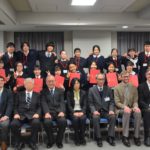
-150x150.jpg)
